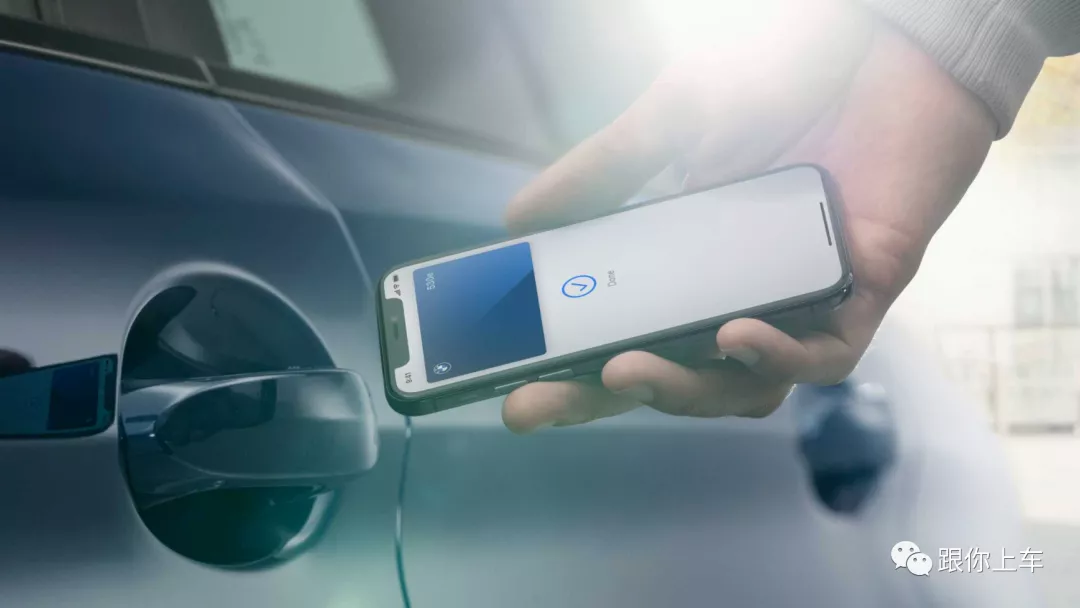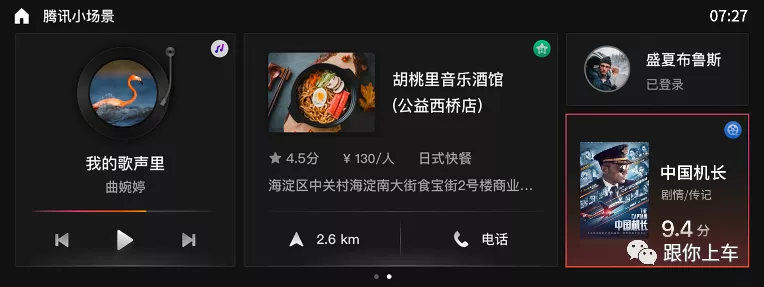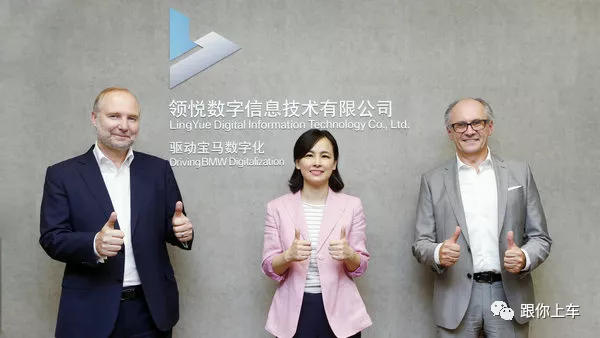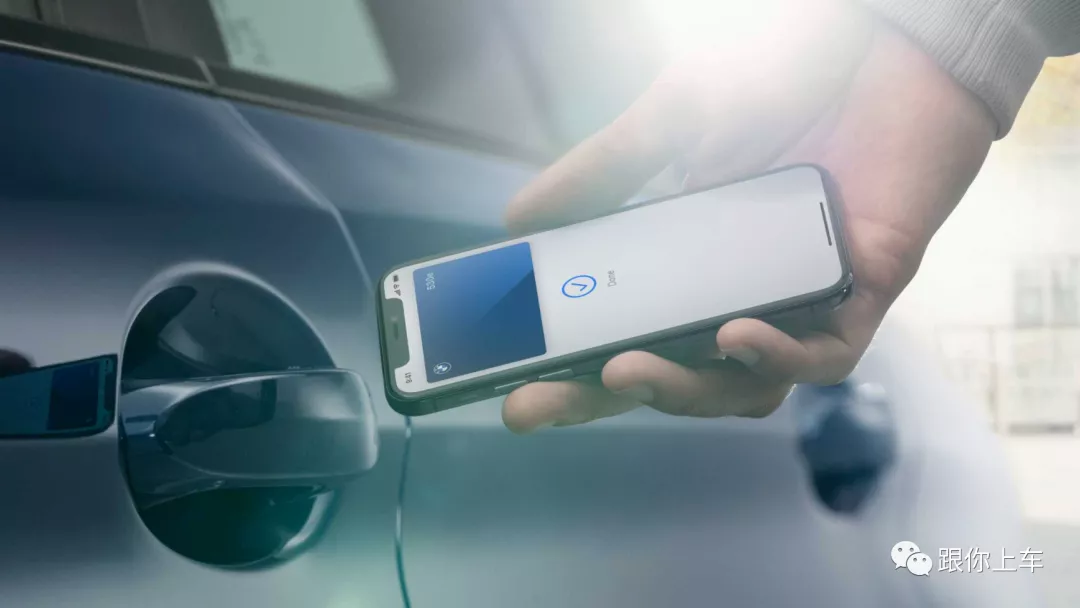On October 12th, BMW held a media communication meeting online with the theme of “2020 BMW China Digital Experience”, summarizing the product innovation in the technology field in the past and giving a detailed explanation on the development plan of BMW China’s digital future, with a core focus on two aspects: product upgrade and user service upgrade.
500,000 BMW cars receive OTA upgrades
When it comes to remote OTA aerial upgrades, we always think of new energy vehicle manufacturers first. However, as early as the 3G era, BMW’s “connected driving” function could allow users to view app-like information on the car screen, a feature similar to that of Dianping, a popular Chinese app for reviews and recommendations.
It is worth mentioning that the large-scale OTA upgrade launched by BMW this time involves more content than a simple software upgrade for “connected driving” and covers whole vehicle modules such as driving assistance, electronic and electrical, chassis, and power systems.
It is understood that this large-scale upgrade strategy mainly targets 500,000 BMW cars worldwide equipped with the seventh-generation BMW iDrive intelligent human-machine interaction system, of which about 200,000 cars are in China. This means that nearly half of the remote upgrades will be implemented in China, which explains why BMW will launch a customized service upgrade plan for the Chinese market, as explained later in this article.
This whole car OTA upgrade includes three aspects:
Firstly, improving vehicle safety. At the recent “BMW Tech Day”, BMW Cloud released a series of digital innovation products for the car terminal, including the in-car version of Tencent’s WeChat, with functions like being able to view videos on the car and an indoors map for parking lots, and a new generation of digital keys. With the rich content ecosystem, information security issues inevitably arise, and this is where BMW’s OTA upgrade makes its first move.

Secondly, enriching content ecology. At the recent Beijing Auto Show, on the BMW booth, people saw consumers ordering food through the iDrive 7.0 smart voice assistant, using Tencent’s Small Scenes to check their horoscope, listening to QQ Music, Himalayan FM, or using Xigua Video to play their favorite videos. In the future, BMW will bring more third-party content ecosystems like Baidu CarLife to further enrich the users’ smart cabin experience.
 ### Thirdly, optimize existing functions.
### Thirdly, optimize existing functions.
For example, the parking assist system of BMW can accurately recognize two types of parking spaces – vertical and horizontal, and can also automatically park the car out after parking. After the vehicle OTA upgrade, this parking assist system adds parallel to the lane or perpendicular to the lane parking functions, further enriching the user’s parking experience.
Overall, the seventh-generation BMW iDrive intelligent human-machine interaction system has achieved innovative functions such as digital keys, digital content ecology, digital parking lot navigation, etc. Although these functions are only equipped on new models such as Series 3, X5, X6, and X7 produced after July 2020, the large-scale vehicle OTA upgrade strategy has already led BMW to a new path.
My BMW App launches CDP customer data platform
Before introducing these two products, let’s talk about Lingyue Digital Information Technology Co., Ltd., a subsidiary of BMW.
Founded in January 2019, Lingyue is a wholly-owned subsidiary of Huachen BMW and the first independent digital business company established by BMW Group in the global market, mainly focusing on promoting BMW’s digital transformation in the fields of marketing, sales management, and customer lifecycle management in the Chinese market.

Although Ma Baobao (Note: Referring to Jack Ma, the founder of Alibaba) talks about data-driven services every day, very few technology companies truly understand and implement it, let alone automakers. Do you remember the internal struggle between SAIC and Alibaba last year? This event also fully illustrates the importance of data. Therefore, it is very difficult for BMW to integrate resources and establish Lingyue.
We know that the dealer system and supplier system of traditional automakers like BMW have become very complex after a long development period. In the face of digital transformation, the trend of time sedimentation forming the big tail is very strong. However, in this year and a half, after Lingyue’s continuous data integration and analysis, two new products have the power to dissolve this trend.
Specifically, the new mobile app My BMW not only has a simple and intuitive interaction method, but also has various functions such as community interaction, charging navigation, remote control, etc. At the same time, BMW has added three major sections for Chinese consumers: community, membership, and e-commerce, as well as more than 60 exclusive small functions, fully aligning with the online experience of new car-making forces such as NIO.What’s even better is that My BMW App is not exclusive to BMW owners. All consumers, including iOS and Android users, can download it. Just like how we can exchange gifts in the points mall by checking in every day, even if we are not Nio car owners. This not only attracts the attention of potential customers but also allows the BMW brand to be spread by word of mouth. Can you imagine, just a few months ago, I was jumping in anger because of the complicated registration process for my BMW account, now I’m happy to see My BMW App on the shelf?
On one hand, promoting the digital transformation of people and cars; on the other hand, Lingyue is also working hard to link people’s data together. Based on this, Lingyue launched the CDP customer data platform this year to establish an integrated user data management system under compliance, giving each user a unique identification code consisting of 10 digits and letters.
At the same time, the brand new dealer operation platform “SPARK,” developed by Lingyue, will also be officially launched at the end of October. By then, BMW will also start the landing trial of the dealer end, helping them to complete more and more businesses online and further enhance their marketing capabilities. At the same time, the platform will integrate the information generated by users on various business ends and conduct visual analysis to continuously improve the user experience.
In the future, if you like a BMW product on My BMW App, you can make an appointment and purchase it online and enjoy one-to-one service experience. During the process, the “SPARK” platform will integrate high-quality dealer resources. Users do not have to worry about various possible problems. After completing the purchase, the user’s data information will also be stored in the CDP customer data platform. After a period of accumulation, BMW will analyze this data to continuously improve the user experience.
In summary, since the release of the “A.C.E.S” plan, BMW’s deep cultivation in the domestic market can be said to be evident to all. Looking back on the past year, in addition to establishing Lingyue to promote data transformation, BMW has also actively partnered with Tencent, China Unicom, and Navinfo to efficiently integrate innovative technologies. Today, the OTA upgrade strategy for 200,000 vehicles and the launch of My BMW App also demonstrate BMW’s importance to the Chinese market.
For BMW, China is a leading market for promoting the global strategy. In the face of digital transformation, there must be a domestic market before there is a global market.
This article is a translation by ChatGPT of a Chinese report from 42HOW. If you have any questions about it, please email bd@42how.com.
